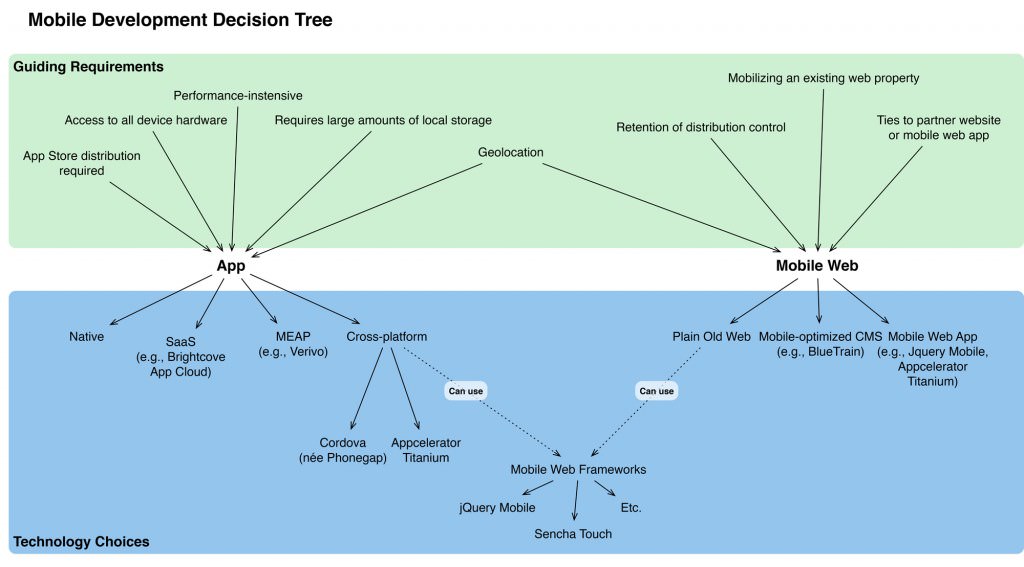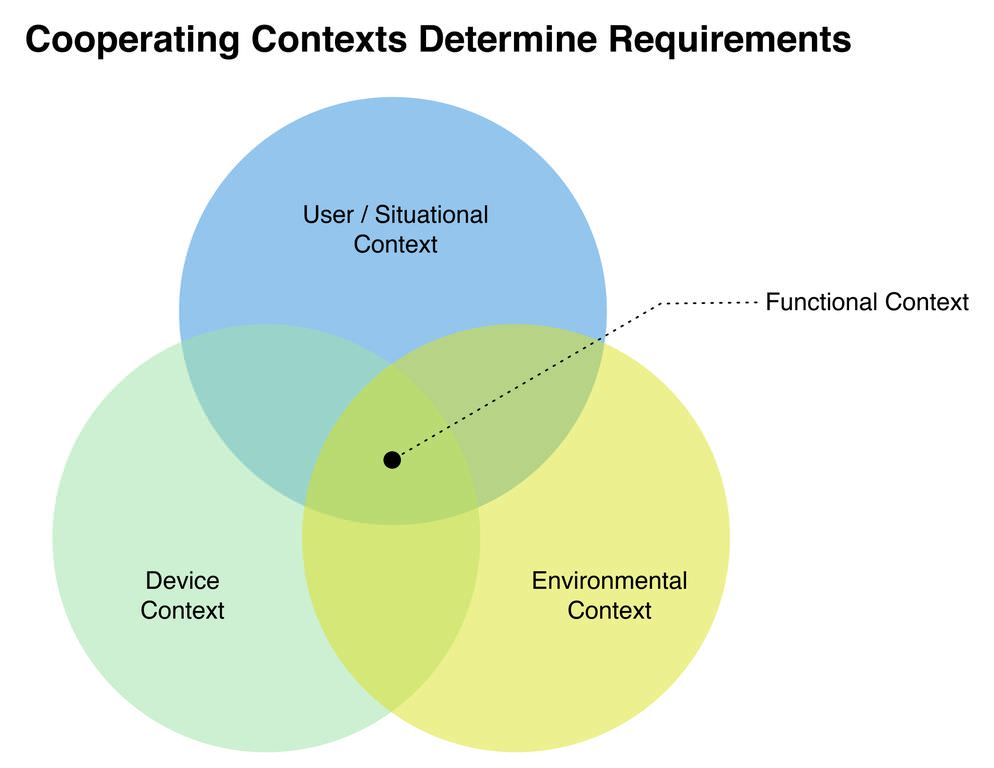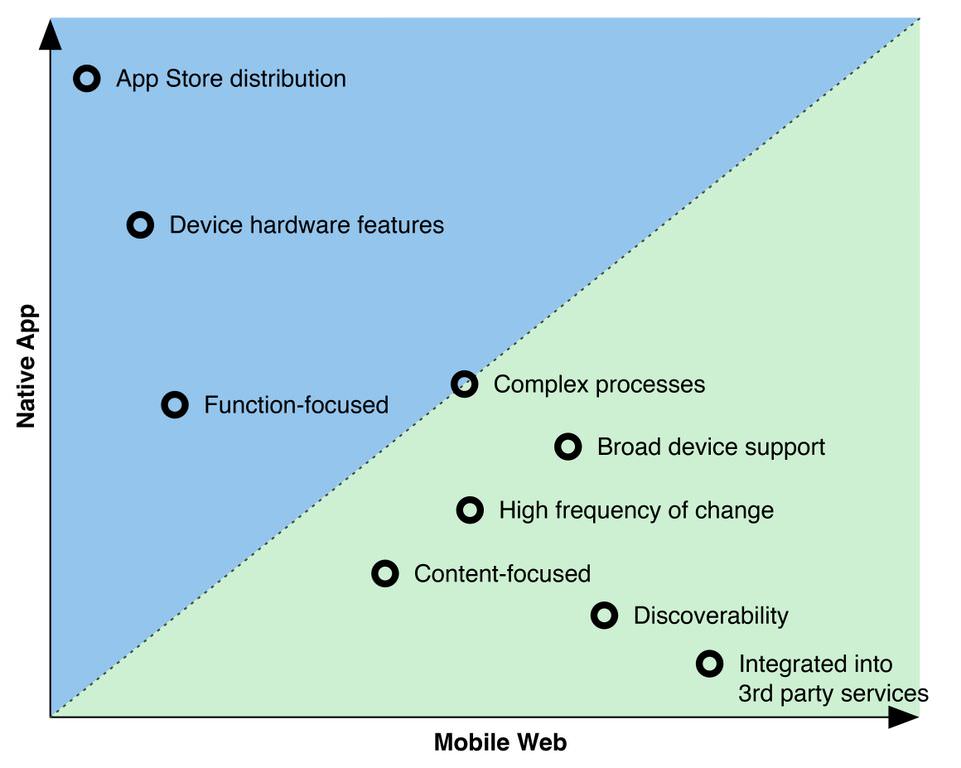Overview
Mobile is no longer something organizations are just experimenting with; every business has some sort of mobile presence, often several. The next stage of mobile development takes a more user-centric approach, which focuses on the user experience, and the contexts those experiences happen in. A “foundational” initiative transforms existing desktop web assets into robust mobile experiences. A “transformational” initiative seeks innovative ways of engaging the customer using device features, in defined contexts. The specific approach, app or mobile web, can be chosen by mapping requirements, process, technology and content.
New Behaviors, New Devices, New Opportunities
Rapid changes in mobile consumer behaviors are having a profound effect on business practices in practically every industry. To meet these challenges, firms need to acknowledge the changing digital environment, develop a strategy to meet those changes and choose tactics that will enable them to meet their strategic goals. Approaching these changes from the right perspective will result in productive change for the organization, which will yield desired results.
At Cantina we have been working with our clients to advance them along the mobile path. This gives us real-world insights into challenges we see in the market and approaches to meet those challenges. Most importantly, although mobile users do present new behaviors and challenges, business success is still about staying true to core business values.
Mobile is Just Another Channel
Many organizations have the idea that mobile phone and tablet interaction requires a whole new strategy. In most cases, it does not. The reality is that the mobile revolution represents another wave in the larger information revolution of the last thirty years and, just as the web is now integral to any business strategy, mobile will also play a central role.
Remember, mobile represents another channel for your customers to interact with your business. This does not mean what you do on the desktop web is going to be successful when translated to the mobile landscape, or that going mobile will not be disruptive to your organization. However, if your business thinks of mobile as an additional channel to your existing go-to-market strategy, planning for mobile will become less challenging.
Remember, mobile represents another channel for your customers to interact with your business.
More Than Ever, it’s About the Users
The rise of the mobile phone and tablet user has, however, reinforced the need for organizations to understand their customers, their behaviors and their desired interactions or experiences. In most cases, mobile has not created a new segment of your users but has provided another channel or avenue for their interaction with your organization. If you have a solid understanding of your users and how they are segmented, then next you should augment that knowledge by adding environment-specific mobile behaviors.
User Focus Areas Should Include:
- What is the prevailing device usage behavior, professional and personal, among constituent groups?
- How does their engagement model change in different environments?
- How does a user engage with your product or service; what are potential points of friction or interesting mobile scenarios?
- What do users consider to be good experiences, mobile or otherwise?
User research can be conducted using a quantitative or qualitative approach. Quantitative research can yield superior data, but is costly and and time consuming. It may introduce too much delay in fast-moving mobile projects. Whatever approach is used, it should include observational research of users in their primary contexts. The main idea is to view your user base through the contextual lens that mobile behaviors can provide; this will help set up the next point of consideration.
The Experience Trumps the Device
Many of the discussions we have on mobile are still very device-centric, usually concerning iPhones or iPads. While device behavior and affordances are important implementation factors, success means keeping your eye on the entire user experience. Cantina recommends starting from the desired user experience and then derive the specific mobile aspects from that study. This seems like common sense, but it is not always a straightforward process.
Focusing on contextual behaviors will help uncover fundamental needs which, combined with your go-to-market strategy, will define the optimal experience. While the use of context is not a new concept, the focus on desktop web for the last decade or so has pushed this concept into the background; mobility has brought it forward.
The user/situational context covers the tasks and goals of the end user. This includes both specific workflows (e.g., “I need to check in to my flight in a cab on the way to the airport.”) and conditions that affect the user’s ability to complete a task (e.g., the user is under pressure or stress).
The device context is defined by the capabilities and constraints of the target devices which includes items such as:
- Screen or viewport size
- Target OS or platform
- Input methods (e.g, touch screen, stylus, keyboard)
- Sensors (e.g, light, sound, spatial orientation)
- Geolocation and positioning
- Media capture devices (e.g., cameras)
The environmental context is defined by factors that affect the function and design of the application, which are external to both the user and the device. This includes conditions such as poor connectivity in a given location, or lack of privacy due to close quarters. The user’s mindset should also be considered, their engagement levels will be different if they are at home, in the office or dining in a restaurant.
All together, these three contexts help to define the functional context for the application. The functional context is the definitive set of concerns and tasks that need to be addressed for that user or user group. When combined with your business strategy for reaching that segment, the overall experience should come into view.
When considering mobile strategy for business, it can be useful to consider two categories for the initiatives you will undertake: foundational and transformative.
Foundational Mobile Initiatives: Removing Mobile Blockers
Foundational initiatives are focused on removing the blockers to accessibility for content and services for mobile users. The goal is to enable access from a broad spectrum of mobile devices and build a future-friendly foundation for new devices and platforms, such as connected TVs.

An example of a foundational initiative would be the development of a responsive web design for an existing website. Making a site responsive means that it will be usable on a variety of mobile devices, increasing engagement time and accessibility.
For many businesses, foundational initiatives are a major concern at present. It is possible to have a significant impact, especially when peers have not yet leapt this hurdle. However, foundational initiatives are similar to the desire to have a website or e-commerce presence: the main goal is to create a mobile footprint.
Transformative Initiatives: Bring Innovation to your Business with Mobile Technologies
Transformative initiatives are focused on innovating using the unique characteristics of mobile devices and the mobile context. While it is important to recall that mobile is “just another channel”, it is equally important to recognize that mobile provides new opportunities, too.
An example of a transformative initiative would be the creation of a native application with tight integration of phone features like geolocation, cameras, and other devices hardware, while taking advantage of the “always available” nature of mobile.
Transformative initiatives are more challenging than foundational initiatives, since they involve discovering new ways to interact with users in specific environments through the capabilities of the device, including the sensors and varied inputs available on many smartphones and tablets. However, these types of projects can produce powerful results by engaging customers in new ways.
So, don’t we need an App for that?
Maybe. Up to this point we haven’t been too concerned with specific implementation approaches, but now is a good time in the process to consider them. With the tremendous spike in mobile device proliferation and usage, and with plenty of room to grow globally, it is safe to say that while only some organizations will need a native app, every organization will need a mobile-compliant web site. The differences and nuances to an app vs mobile web site approach are well documented; both approaches may have a place in your organization’s online arsenal.
It is safe to say that while only some organizations will need a native app, every organization will need a mobile-compliant web site.
Deciding which approach is appropriate, however, is typically based on factors such as device capabilities required, functional focus of the app and the need for discoverability by users, or potential users. What is critical is that the experience across devices for apps, mobile web and desktop web, is as consistent and frictionless as possible. This cannot be emphasized too much.
Everyone has had the experience of navigating to a website on our phone or tablet only to find that it does not work effectively or that the experience is a mobile island unto itself, with little connection to the primary web experience. Or, just as bad, it is a partial experience with a mobile compliant front end that peels back to drop the user off at a desktop web experience in all its unusable glory. Those kind of barriers detract from your customer experience and can cause that same customer to move on to your competition.
Recommendations: Get Ready to “do” Mobile
From a tactical perspective we recommend reviewing your capabilities in the following areas:
- Discovery: Start with research. Find out as much as you can, within the project parameters, about your customers, their needs, their devices, and the environments in which they are accessing your brand’s content.
- Process: Your software development life cycle (SDLC) might need to be tweaked for success when developing for native or web mobile implementations. Common problems we see for clients are requirements gathering processes that are completely geared to desktop development, as well as interface design processes and skill sets that do not consider or make affordances for mobile experiences. Testing procedures will also need to be reviewed, as the additional interfaces and platforms that native or web mobile development presents will need to be factored into the project’s process and effort.
- Technology: Reviewing your architecture, in particular your approach to designing and implementing web services, is important when moving into the mobile sphere. Device capabilities vary widely as do the users’ connection speed, so providing data “just in time” for consumption is going to provide a better experience which may require a deeper examination of how your web services are designed, accessed and updated. Also, the growth of mobile has put a premium on the ability for organizations to provide access to data and services disconnected from their direct web sphere of influence, so considering your technical architecture with portability in mind will become more important over time.
- Content: Content is not often considered in these conversations, but our experience has shown that your content strategy, the layout, source and workflow of your site content, is where the mobile battle is won or lost. Like many software processes, we have become very conditioned to thinking in desktop terms, with large screens and plenty of bandwidth and computing power to spare. Content creation and deployment is no exception. We are finding that many companies need to rethink how they approach the creation and deployment of content to best position their experience across multiple viewports and consumption platforms.
Conclusion
In closing, 2013 will certainly be another year when mobile is central to the conversation in most organizations. Your best path to success is to work from your areas of strength, but be ready to take on an engagement design approach that will require a refresh of your user understandings, and a development approach to align with the specific factors that mobile experience brings to the table.


